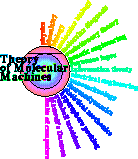

Fred Williams claims that the ev program uses truncation selection and "thus one of many reasons his program is bogus". (He neglects to detail all the reasons; this is a typical creationist diversionary tactic.)
So what is truncation selection?
Truncation selection is known to be the most efficient form of directional selection. When this is modified so that the fitness increases linearly over a range of one or two standard deviations of the value of the selected character, the efficiency is reduced, but not greatly.
A breeding technique in which individuals in whom quantitative expression of a phenotype is above or below a certain value (the truncation point) are selected as parents for the next generation.
Fred William's complaint is invalid. The method used in the Ev program is position in the sort list, NOT the phenotype!
To do truncation selection would mean that we pick a certain number of mistakes and kill all organisms that make more than that number of mistakes. But the program does not do that. Instead, the organisms are sorted by their number of mistakes and the half that make the most mistakes are killed. This means that the 'ante goes up' over time. When the program begins an organism could get away with many mistakes and stay in the surviving half - so long as there are others that make more mistakes. But eventually those others get wiped out and the cutoff is more severe. So the selection criterion is a relative competition and changes with time. It is an evolutionary race, as has been observed many times in nature.
A test by a scientist. Unlike Williams, who is not acting like a scientist, Paul C. Anagnostopoulos decided to test the hypothesis that the method used in Ev was affecting the process. He reports:
I modified Ev so it does not do truncation selection. Instead, it replicates the second-, third-, and fourth-best creatures, replacing the second-, third-, and fourth-worst ones. The best and worst creatures were left alone for good measure. Instead of taking about 800 generations to evolve a perfect creature, it took about 10,000.Unlike Williams, Paul Anagnostopoulos is acting like a true a scientist. He tested a hypothesis and found that even if Ev were doing 'truncation selection' (which it is not) a different form of selection gives similar results.
Here's a challenge for the creationists: Stop complaining and do a scientific test of your own ideas. Rewrite Ev so that the total number of mistakes of all organisms is computed. Divide the number of mistakes of each organism by this total to get relative mistake scores. Then alter the sorting algorithm to sort probabilistically based on these relative mistake scores. One way to implement this would be to sum the mistakes of two organisms that are being compared and divide each organism's mistakes by that pair wise total. Then pick a random number between 0 and 1 and compare it to that total. Use this to determine whether or not the organisms switch places in the sort. (Note you will have to deal with the special case of zero.) In other words, make the selective process be probabilistic so that there is nothing at all like truncation.
Notice that, since creatioinists stop complaining when defeated, the most extremely difficult part of the challenge above is "do a scientific test of your own ideas"!
2005 Jun 1: Fred Williams Responds:
You'll be hard-pressed to see an evolutionist ever program a model like this, because they know it is doomed to fail, unless they use fantasyland assumptions like Schneider did and crank up the beneficial mutation rate to 50% and apply truncation selection.Williams is making a testable prediction - that anything other than truncation selection will fail. He refuses to do his own work. Maybe we will some day. However, it is incorrect to refer to beneficial mutations in Ev. The mutations are everywhere and not made with any bias. If you watch an ev run, you will see that there are a large number of creatures that make mistakes and die instantly. In other words, most of the mutations probably kill the organisms.
2006 Nov 28: Solution to the Challenge.
No creationist responded to this by doing the hard work.
However a few moments of thought shows that the programming is
not necessary.
When one adds the mistakes of two organisms and divides by the total
the sorting order is preserved. Therefore the
results will be the same: Rsequence will still evolve to match Rfrequency.
![]()

Schneider Lab
origin: 2005 May 14
updated: 2006 Nov 28
![]()